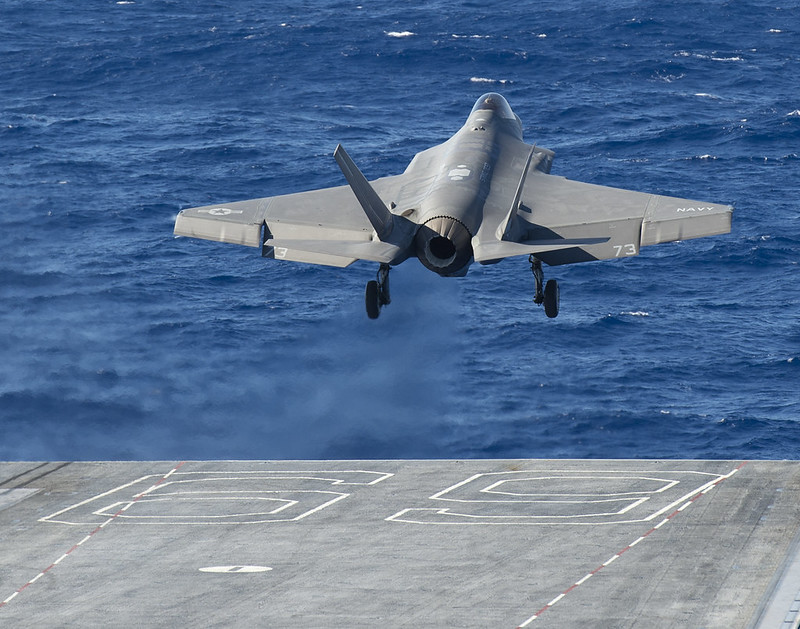F-35 : F-35 XL , the Fourth Variant
<< Sass Pordoi, Dolomitis, Italy, JUL-27-2024 >> F-35 : F-35 XL , the Fourth Variant At TDM, we occasionally publish what we call “Blue Sky” articles—creative explorations that reflect our team’s engineering imagination. These articles emerge from the collaborative brainstorming sessions of our staff, often fueled by spirited discussions around the fire place with a nice bottle of Malvasia. Occasionally, these musings lead to ideas with real potential. One such proposal is a conceptual fourth variant of the F-35, tailored as a long-range interdiction bomber, which we’ve dubbed the F-35 XL. This idea was inspired by a pressing challenge facing U.S. airpower: the lack of range in current stealthy tactical fighter bombers. We will soon deploy hundreds if not thousands of powerful, stealthy, tactical fighters with "short legs". This shortfall poses significant challenges in the European theater. Even more so in the Pacific theater, where extended operational reach is even more crucial. Over reliance on non-stealthy tanker aircraft in contested environments introduces vulnerabilities. While developing a new stealthy tanker is a long-term goal, we believe the F-35 XL could serve as a viable interim solution. Bridging the gap with enhanced range and operational flexibility. Building on Proven Concepts: The Legacy of the F-16XL The F-16XL, an experimental variant of the General Dynamics F-16, serves as a valuable case study for this proposal. Developed in the late 1970s and early 1980s, the F-16XL featured a distinctive cranked-arrow delta wing, significantly increasing its wing area and fuel capacity. The design allowed for a longer range, enhanced payload capability, and reduced drag, making it ideal for interdiction missions. Though it ultimately lost out to the F-15E Strike Eagle, the F-16XL demonstrated the feasibility of adapting an existing airframe to meet specialized mission requirements. The trade-off between the two designs lies in agility versus payload and range. The F-16, with its lighter weight and smaller wing area, excels in close-quarters air combat and is more suited for multi role missions requiring quick, agile responses. The F-16XL, on the other hand, sacrifices some of that agility for superior performance in strike missions, with enhanced stability, endurance, and weapons integration. Ultimately, the F-16XL demonstrated how the base F-16 design could be adapted for different mission profiles, but the trade-offs in maneuverability and operational focus meant it was not selected for production over its competitor, the F-15E Strike Eagle. So basically the F16 carries about 7000 pounds of internal fuel. The F-16 XL carries about 10,600 pounds of fuel. So the delta wing seems to add about 30% more fuel. Not a bad start. The F-16XL remains a noteworthy example of experimental aircraft development, highlighting how modifications to a proven platform can yield significant performance improvements. Its lessons in aerodynamics and payload integration have influenced subsequent designs and underscore the adaptability of the F-16 family. While it was not adopted for operational service, the F-16XL left a legacy of innovation that continues to inspire aviation advancements. So even though the XL lost out to the F-15E, it showed how you could take a single seat,single engine fighter plane and make an interdiction strike aircraft. So what does a F-35 XL look like ?? The F-35 XL: Design and Performance Enhancements Following a similar philosophy, the F-35 XL would prioritize 3 issues, range, range, and range. Focusing exclusively on increasing fuel capacity without introducing new capabilities or payload requirements. This approach would mitigate cost and complexity while addressing a critical operational need. Lockheed Martin’s established production processes for multiple F-35 variants would further streamline the integration of this new design. The proposed F-35 XL would build upon the F-35C airframe, leveraging its longer range and robust carrier-capable structure. Key modifications include: A) Delta Wing Integration: A stealth-optimized, fuel-filled delta wing to significantly increase range. B) Optimized Airframe: Retaining the F-35C’s rugged frame and landing gear, stripped of carrier-specific components like tail hooks and folding wings. This would support the weight of a fuel filled delta wing wing in a conventional take off role. C) Fuel Efficiency: Utilizing the internal space saved by omitting the internal gun for additional fuel. D) Aerial Refueling: Maintaining the F-35C’s probe-and-drogue refueling system for compatibility with stealthy tankers like the MQ-25 UAV. E) Nuclear Capability: Integrating the F-35A’s Permissive Action Link (PAL) cabling and mission software for the B61-12 nuclear weapon, enabling theater level nuclear deterrence. By extrapolating the fuel capacity gains observed in the F-16XL, the F-35 XL could achieve a combat radius of 800 nautical miles, extendable to 1,500 nautical miles with support from stealthy refuelers. This performance would address critical gaps in U.S. airpower, particularly in the vast Pacific theater, while enhancing NATO’s strategic options in Europe. Strategic Implications The F-35 XL, supported by stealthy MQ-25 tankers, represents a game-changing capability for the U.S. and its allies. Its extended range would enable "stand-in" tanking operations, minimizing reliance on vulnerable traditional tankers. Furthermore, the addition of nuclear capability would serve as a deterrent, countering adversaries’ escalating threats with credible intermediate-range strike options. In sum, the F-35 XL embodies a pragmatic solution to modern airpower challenges, demonstrating how innovation within established frameworks can yield trans formative results. Finally, the F-35 XL/MQ-25 pair would only be an interim solution. The longer term and more expensive solution is the development of a larger,flying boom style, stealth tanker aircraft. Here at TDM we call this the "Stealth Tanker Imperative", and will be the subject of future articles. We believe the USA can not fully utilize its existing air power without this new aircraft. References Barret & Carpenter. Survivability in the Digital Age : The Imperative for Stealth, The Mitchell Institute for Aerospace Studies, Air Force Association, July 2017 Burbage,Clark, & Pitman. F-35 The inside story of the Lightning II. SkyHorse Publishing, 2023. https://en.wikipedia.org/wiki/General_Dynamics_F-16XL,accesed 22 NOV 2024

